Characteristics and Formation Stages of Natural Fractures in the Fengcheng Formation of the Mahu Sag, China: Insights from Stable Carbon and Oxygen Isotope and Fluid Inclusion Analysis
Abstract
:1. Introduction
2. Geological Setting
3. Methodologies
3.1. Drilling Core and Micro-Section Observation
3.2. Borehole Image Logs
3.3. Fluid Inclusion Test
3.4. Stable Carbon and Oxygen Isotope Analysis
3.5. Nano-CT Tests
3.6. FE-SEM Experiment
4. Results and Discussion
4.1. Fracture Characteristics
4.2. The Classification of Fractures Based on Mechanical Origin
4.3. Comprehensive Determination of the Evolution Periods of Fractures
4.3.1. The Observation of Drilling Cores and Microsections
4.3.2. Stable Carbon and Oxygen Isotope Analysis
4.3.3. Fluid Inclusion Tests
4.4. Genetic Mechanisms of Multiperiod Fractures
4.5. Effect of Fractures on Oil Productivity
4.5.1. Microfractures
4.5.2. Macrofractures
5. Conclusions
- The Fengcheng Formation of the Mahu Sag contains two types of natural fractures: tectonic fractures and atectonic fractures. Tectonic fractures consist of high-angle interlayer shear fractures, along-layer shear fractures, and tensile fractures. Atectonic fractures include bedding fractures, hydraulic fractures, and hydrocarbon-generating overpressure fractures. The fractures are typically medium to high angle with filled minerals such as calcite and quartz. Additionally, shale with higher content of brittle minerals (quartz, feldspar, calcite and dolomite) is more susceptible to generating fractures. Vertically, fracture development is more prominent at the bottom of Feng #2 Formation and at the top of Feng #3 Formation.
- Combining the cutting relationships of natural fractures at both macro- and micro-scales, stable carbon and oxygen isotope analysis, and fluid inclusion results with the evolution of regional tectonic movements, the results suggest that the tectonic fractures in the study area can be classified into three stages. The first stage of fracture development occurred during the Late Permian period (243–266 Ma). The second stage of fracture evolution took place during the Late Indosinian to Early Yanshanian period (181–208 Ma). Finally, the third stage of fracture development occurred during the late Yanshanian to early Himalaya period (50–87 Ma).
- Among various types of tectonic fractures, the density of high-angle interlayer shear fractures has been found to exhibit a positive correlation with daily gas production, which suggests that high-angle interlayer shear fracture plays a significant role in promoting the production and transportation of hydrocarbon resources. Furthermore, hydrocarbon-generating overpressure microfractures, characterized by their small pore sizes and good connectivity, serve as an effective permeability system. This system connects previously isolated micropores in the shale reservoir, creating a connected pore space.
Author Contributions
Funding
Data Availability Statement
Conflicts of Interest
References
- Zhao, W.; Hu, S.; Hou, L.; Yang, T.; Li, X.; Guo, B.; Yang, Z. Types and resource potential of continental shale oil in China and its boundary with tight oil. Pet. Explor. Dev. 2020, 47, 1–11. [Google Scholar] [CrossRef]
- Jin, Z.; Zhu, R.; Liang, X.; Shen, Y. Several issues worthy of attention in current lacustrine shale oil exploration and development. Pet. Explor. Dev. 2021, 48, 1471–1484. [Google Scholar] [CrossRef]
- Lu, G.; Zeng, L.; Dong, S.; Huang, L.; Liu, G.; Ostadhassan, M.; He, W.; Du, X.; Bao, C. Lithology identification using graph neural network in continental shale oil reservoirs: A case study in Mahu Sag, Junggar Basin, Western China. Mar. Pet. Geol. 2023, 150, 106168. [Google Scholar] [CrossRef]
- He, W.J.; Qian, Y.X.; Zhao, Y.; Li, N.; Zhao, X.M.; Liu, G.L.; Miao, G. Exploration Implications of Total Petroleum System in Fengcheng Formation, Mahu Sag, Junggar Basin. Xinjiang Pet. Geol. 2021, 42, 641–655. (In Chinese) [Google Scholar] [CrossRef]
- Tang, Y.; Cao, J.; He, W.-J.; Guo, X.-G.; Zhao, K.-B.; Li, W.-W. Discovery of shale oil in alkaline lacustrine basins: The late paleozoic Fengcheng Formation, Mahu sag, Junggar Basin, China. Petrol. Sci. 2021, 18, 1281–1293. [Google Scholar] [CrossRef]
- Zhang, D.; Ranjith, P.G.; Perera, M.S.A. The brittleness indices used in rock mechanics and their application in shale hydraulic fracturing: A review. J. Petrol. Sci. Eng. 2016, 143, 158–170. [Google Scholar] [CrossRef]
- Huo, J.; Wang, X.H.; Luo, C.; Huang, H.Y.; Chen, J.; Yin, C.; He, J.M. Fracture characteristics of Longmaxi shale in Southern Sichuan. J. Eng. Geol. 2021, 29, 171–182. [Google Scholar] [CrossRef]
- Gale, J.F.W.; Reed, R.M.; Holder, J. Natural fractures in the Barnett Shale and their importance for hydraulic fracture treatments. AAPG Bull. 2007, 91, 603–622. [Google Scholar] [CrossRef]
- Yang, Z.; Wang, X.; Ge, H.; Zhu, J.; Wen, Y. Study on evaluation method of fracture forming ability of shale oil reservoirs in Fengcheng Formation, Mahu sag. J. Petrol. Sci. Eng. 2022, 215, 110576. [Google Scholar] [CrossRef]
- Zeng, L.; Su, H.; Tang, X.; Peng, Y.; Gong, L. Fractured tight sandstone oil and gas reservoirs: A new play type in the Dongpu depression, Bohai Bay Basin, China. AAPG Bull. 2013, 97, 363–377. [Google Scholar] [CrossRef]
- Lyu, W.; Zeng, L.; Zhou, S.; Du, X.; Xia, D.; Liu, G.; Li, J.; Weng, J. Natural fractures in tight-oil sandstones: A case study of the Upper Triassic Yanchang Formation in the southwestern Ordos Basin, China. AAPG Bull. 2019, 103, 2343–2367. [Google Scholar] [CrossRef]
- Liu, J.; Ding, W.; Yang, H.; Liu, Y. Quantitative Multiparameter Prediction of Fractured Tight Sandstone Reservoirs: A Case Study of the Yanchang Formation of the Ordos Basin, Central China. SPE J. 2021, 26, 3342–3373. [Google Scholar] [CrossRef]
- Zhi, D.; Tang, Y.; He, W.; Guo, X.; Zheng, M.; Huang, L. Orderly coexistence and accumulation models of conventional and unconventional hydrocarbons in Lower Permian Fengcheng Formation, Mahu sag, Junggar Basin. Pet. Explor. Dev. 2021, 48, 43–59. [Google Scholar] [CrossRef]
- Zou, C.; Yang, Z.; Cui, J.; Zhu, R.; Hou, L.; Tao, S.; Yuan, X.; Wu, S.; Lin, S.; Wang, L.; et al. Formation mechanism, geological characteristics and development strategy of nonmarine shale oil in China. Pet. Explor. Dev. 2013, 40, 15–27. [Google Scholar] [CrossRef]
- Xie, X.; Deng, H.; Fu, M.; Hu, L.; He, J. Evaluation of pore structure characteristics of four types of continental shales with the aid of low-pressure nitrogen adsorption and an improved FE-SEM technique in Ordos Basin, China. J. Petro. Sci. Eng. 2021, 197, 108018. [Google Scholar] [CrossRef]
- Li, X.Y.; Du, W.; Feng, X.; Shi, F.L.; Chen, Y.; Wang, Y.S.; Jiang, Z.X.; Luo, Q. Pressure Evolution Mechanism of Marine Shale Reservoirs and Shale Gas Accumulation Model: Evidence from Fluid Inclusions in the Wufeng–Longmaxi Formation in the Basin Margin Structural Transition Zone in Northern Guizhou Province, China. Minerals 2023, 13, 241. [Google Scholar] [CrossRef]
- Gonzalez, L.A.; Lohmann, K.C. Carbon and oxygen isotopic composition of Holocene reefal carbonates. Geology 1985, 13, 811–814. [Google Scholar] [CrossRef]
- Frezzotti, M.L.; Tecce, F.; Casagli, A. Raman spectroscopy for fluid inclusion analysis. J. Geochem. Explor. 2012, 112, 1–20. [Google Scholar] [CrossRef]
- Aghli, G.; Moussavi-Harami, R.; Tokhmechi, B. Integration of sonic and resistivity conventional logs for identification of fracture parameters in the carbonate reservoirs: A case study, Carbonate Asmari Formation, Zagros Basin, SW Iran. J. Petrol. Sci. Eng. 2020, 186, 106728. [Google Scholar] [CrossRef]
- Cao, J.; Xia, L.W.; Wang, T.T.; Zhi, D.M.; Tang, Y.; Li, W.W. An alkaline lake in the Late Paleozoic Ice Age (LPIA): A review and new insights into paleoenvironment and petroleum geology. Earth-Sci. Rev. 2019, 202, 103091. [Google Scholar] [CrossRef]
- Song, T.; Huang, F.X.; Wang, S.Y.; Yang, F.; Lv, W.N.; Liu, C.; Jia, P.; Fan, J.J. Characteristics and exploration potential of Jurassic oil and gas reservoirs in Mahu sag of the Junggar Basin. China Pet. Explor. 2019, 24, 341–350. (In Chinese) [Google Scholar] [CrossRef]
- Wang, J.T.; Yang, S.; Zou, Y.; Zhao, Y.; Huang, L.L.; Mou, L.W. Characteristics, genesis and distribution of high-quality reservoir of the first member of the Permian Fengcheng Formation in Mabei area, Junggar Basin. China Pet. Explor. 2022, 27, 99–109. (In Chinese) [Google Scholar] [CrossRef]
- Zou, Y.; Qi, Y.P.; Song, D.; Chen, W.S.; Wei, P.Y. Geological characteristics and sweet spot evaluation of shale oil reservoir in Fengcheng Formation in Well Maye-1. Xinjiang Pet. Geol. 2022, 43, 714–723. (In Chinese) [Google Scholar] [CrossRef]
- Fritz, P.; Smith, D.G.W. The isotopic composition of secondary dolomites. Geochem. Cosmochim. Acta 1970, 34, 1161–1173. [Google Scholar] [CrossRef]
- Xia, Y.; Deng, H.C.; Wang, Y.Y.; He, J.H.; Xie, X.H.; Teng, J. Development characteristics and formation stages of natural fractures of the Triassic Leikoupo Formation in Pengzhou area of Western Sichuan Basin. Mar. Orig. Pet. Geol. 2021, 26, 81–89. (In Chinese) [Google Scholar] [CrossRef]
- Hu, S.J.; Wang, X.J.; Cao, Z.L.; Li, J.Z.; Gong, D.Y.; Xu, Y. Formation conditions and exploration direction of large and medium gas reservoirs in the Junggar Basin, NW China. Pet. Explor. Dev. 2020, 47, 266–279. [Google Scholar] [CrossRef]
- Xie, X.; Hu, L.; Deng, H.; Gao, J. Evolution of pore structure and fractal characteristics of marine shale during electromagnetic radiation. PLoS ONE 2020, 15, e0239662. [Google Scholar] [CrossRef]

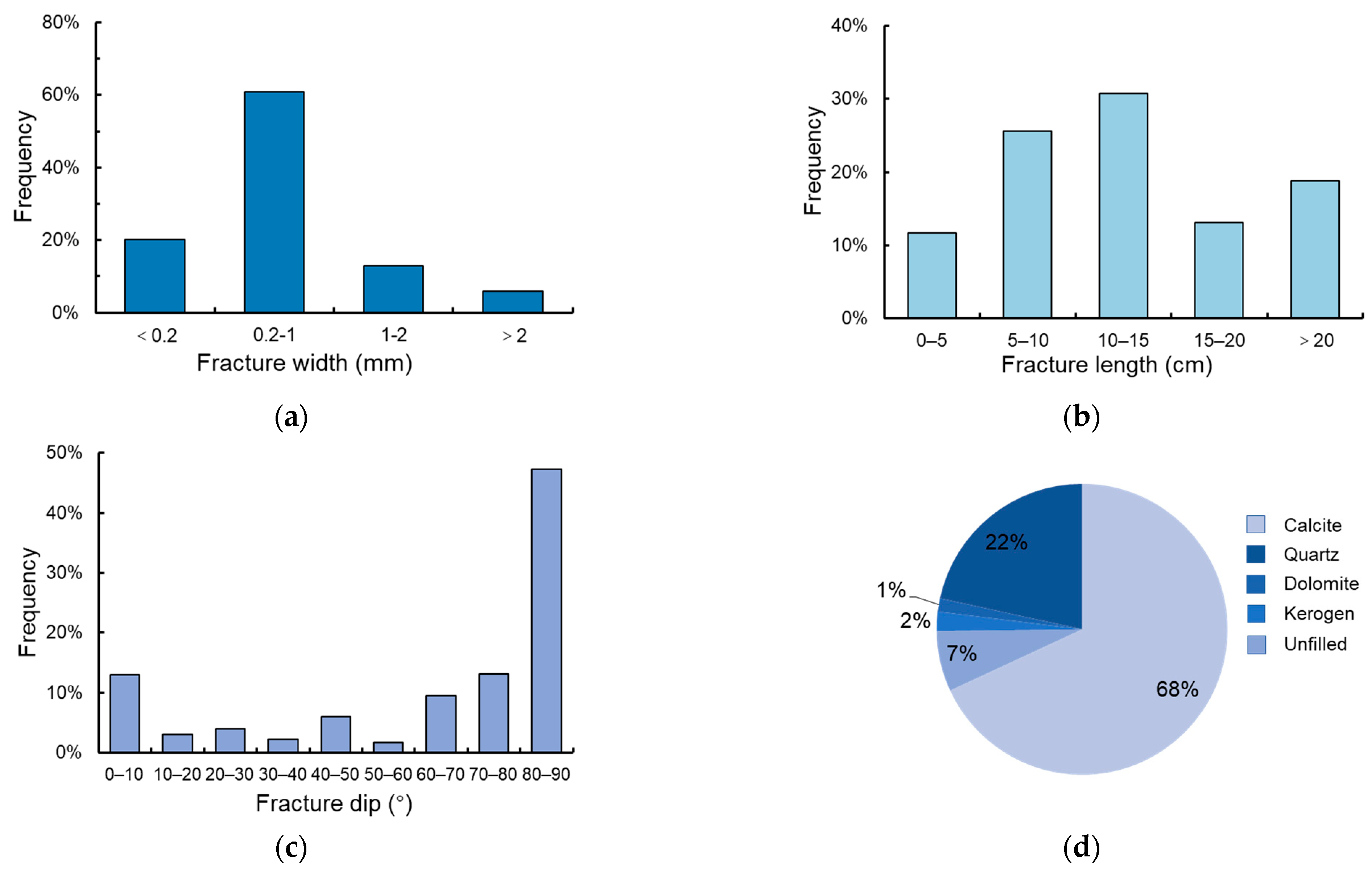
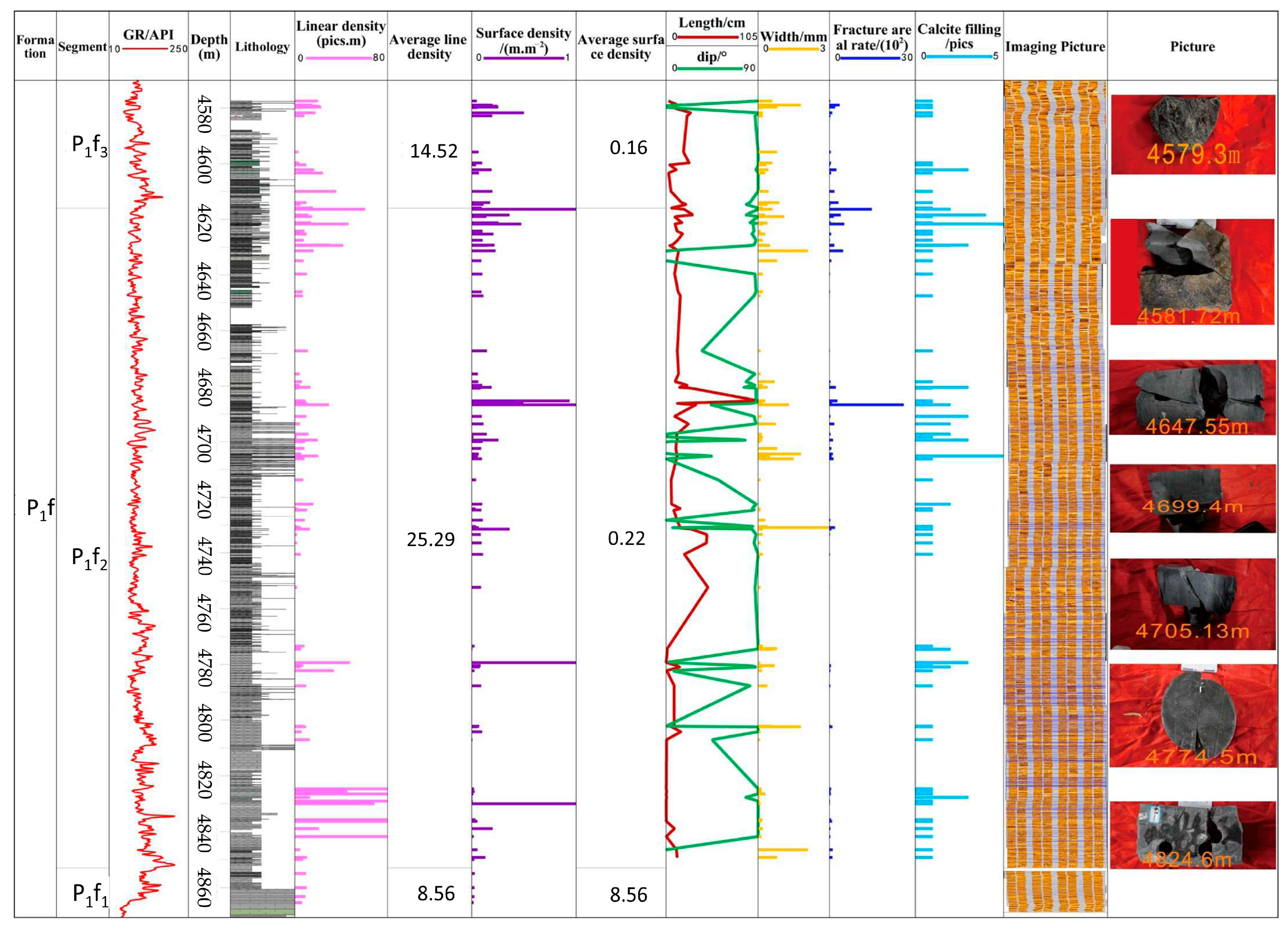
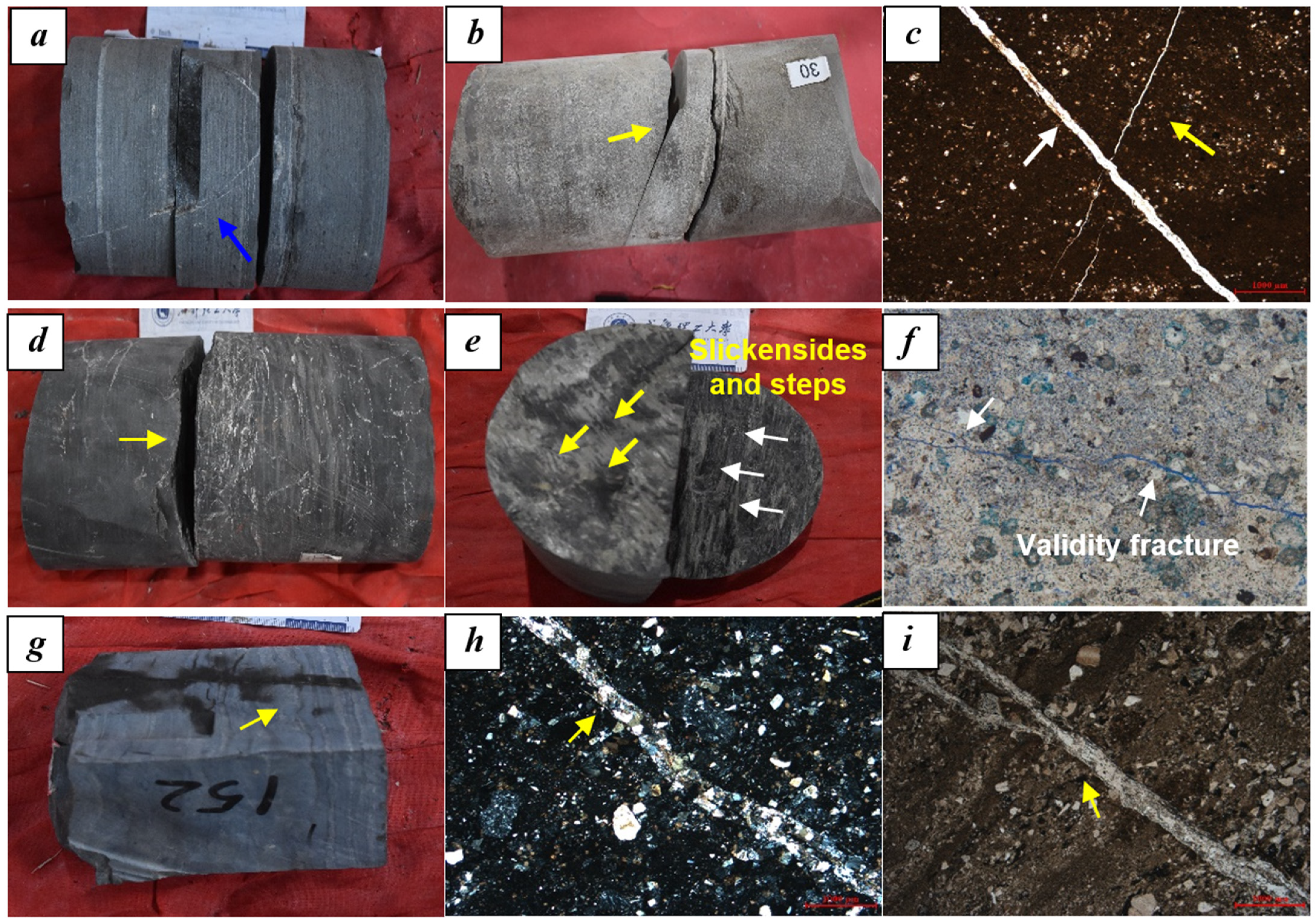
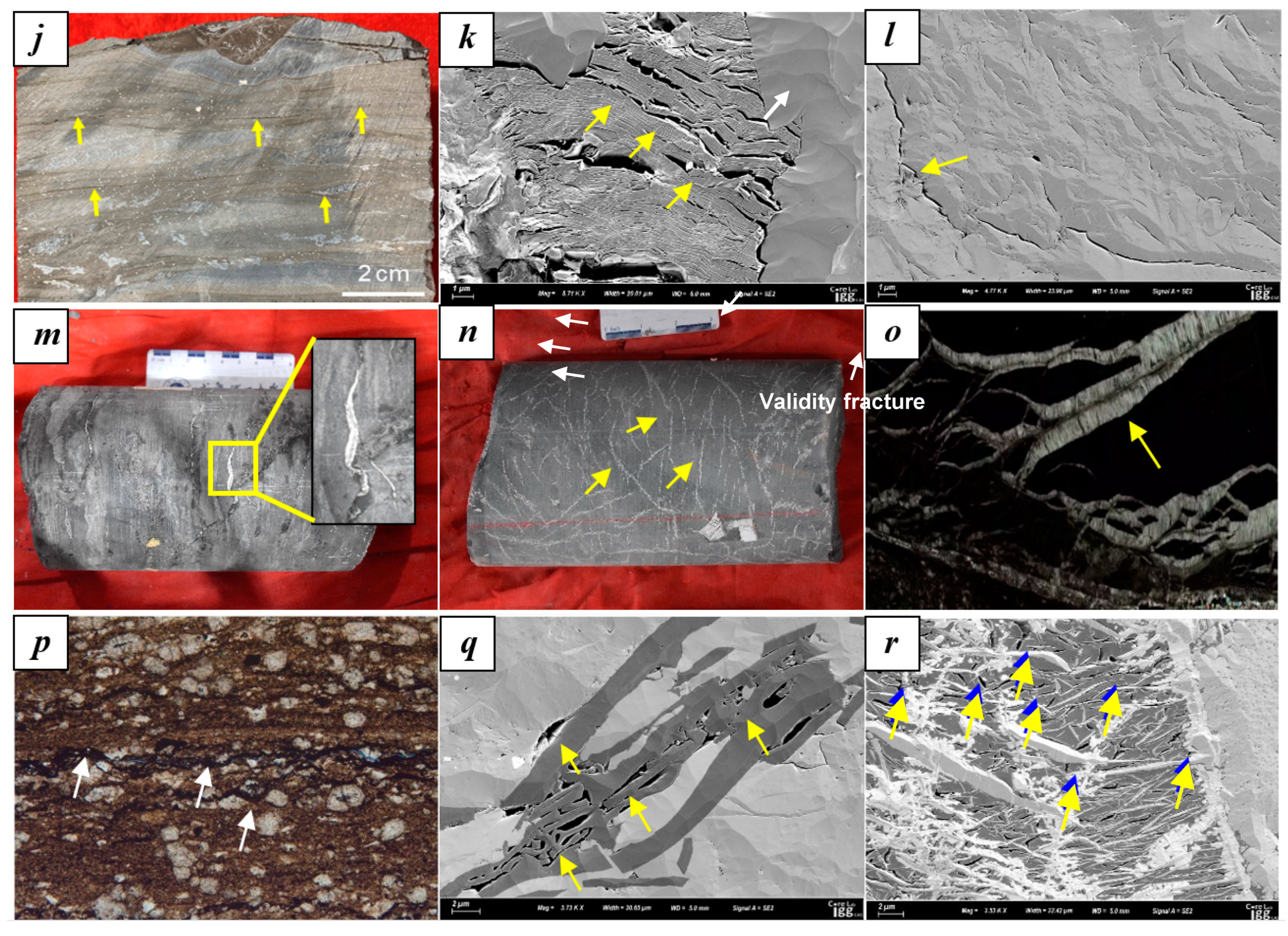
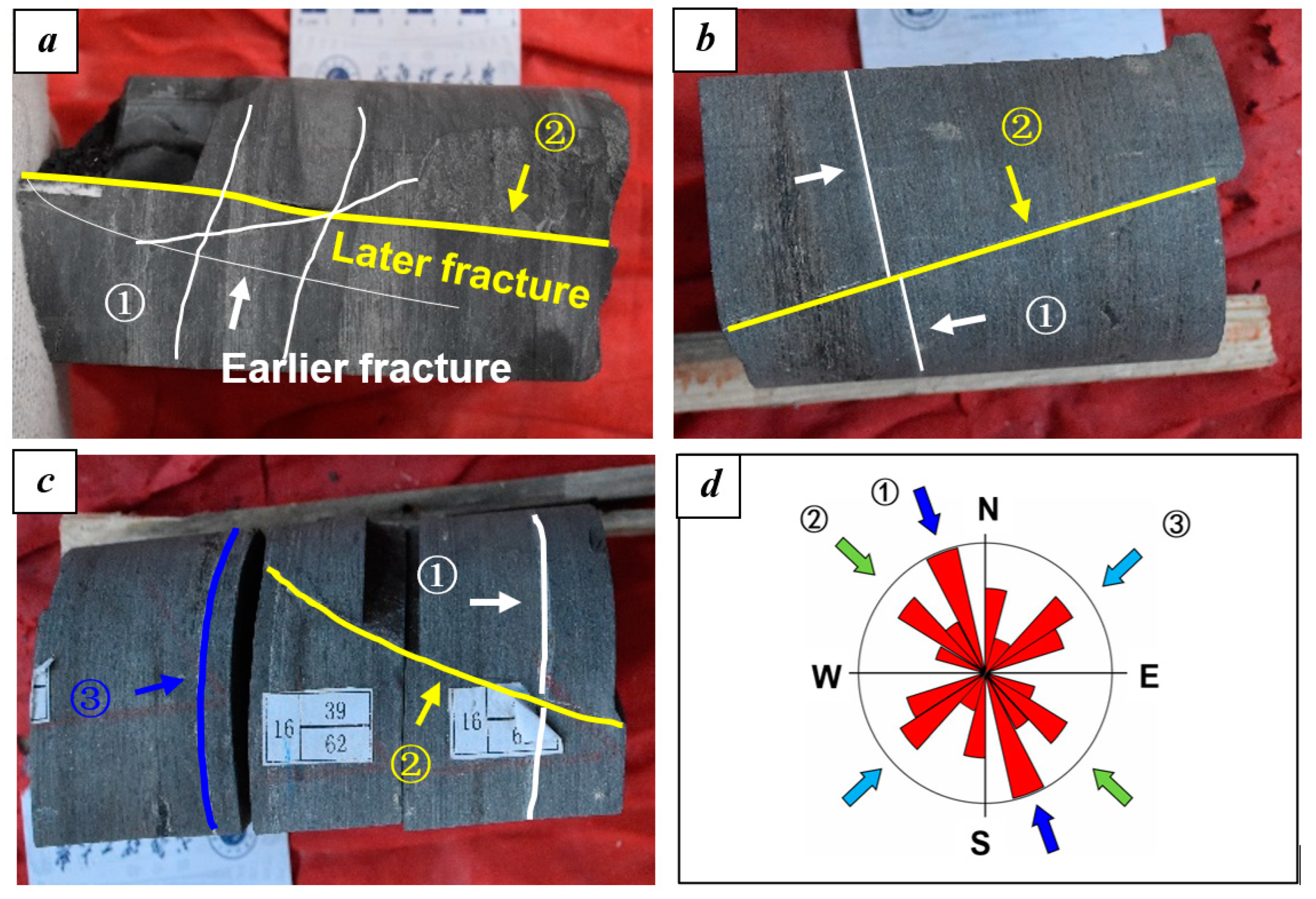

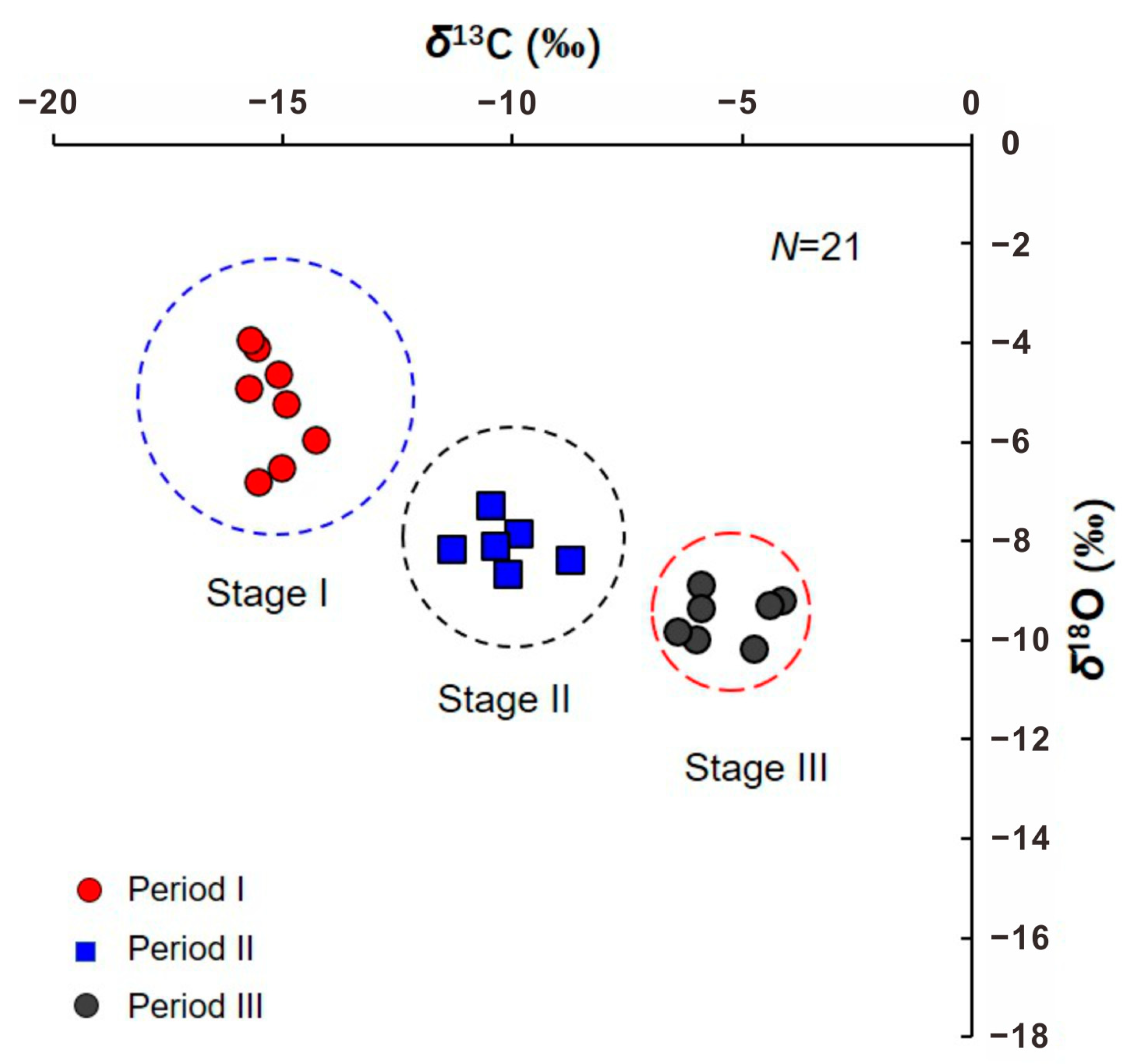

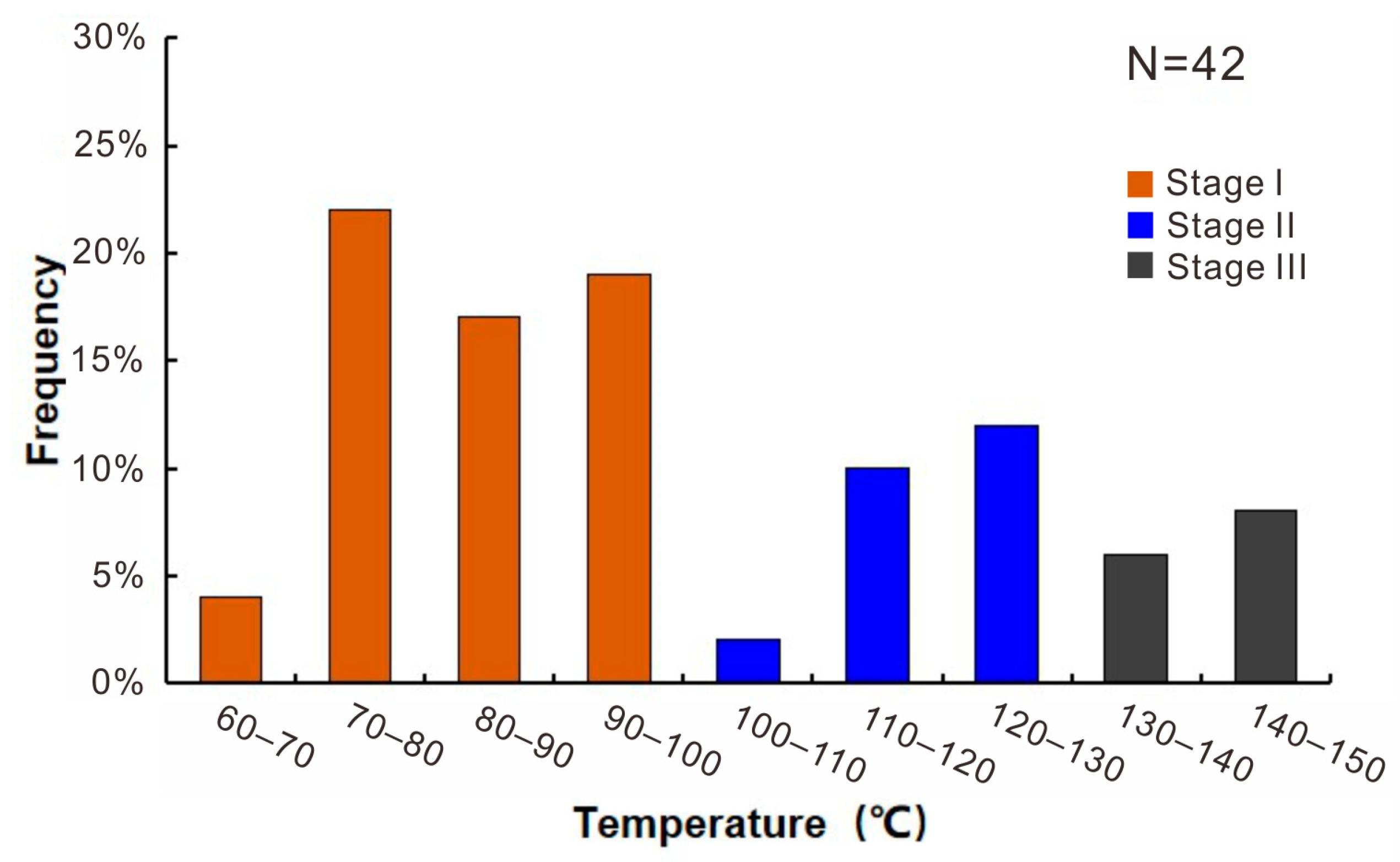
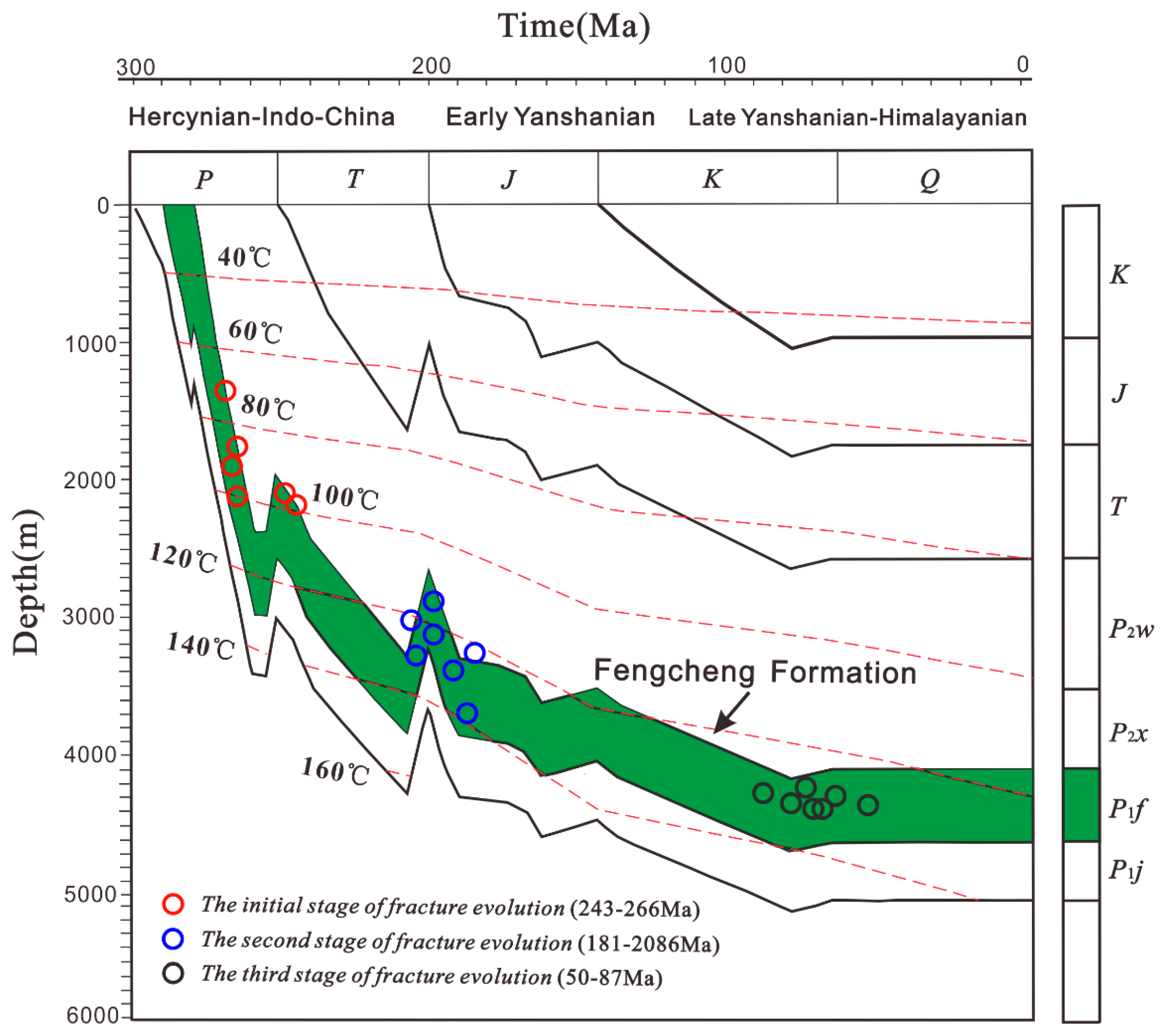
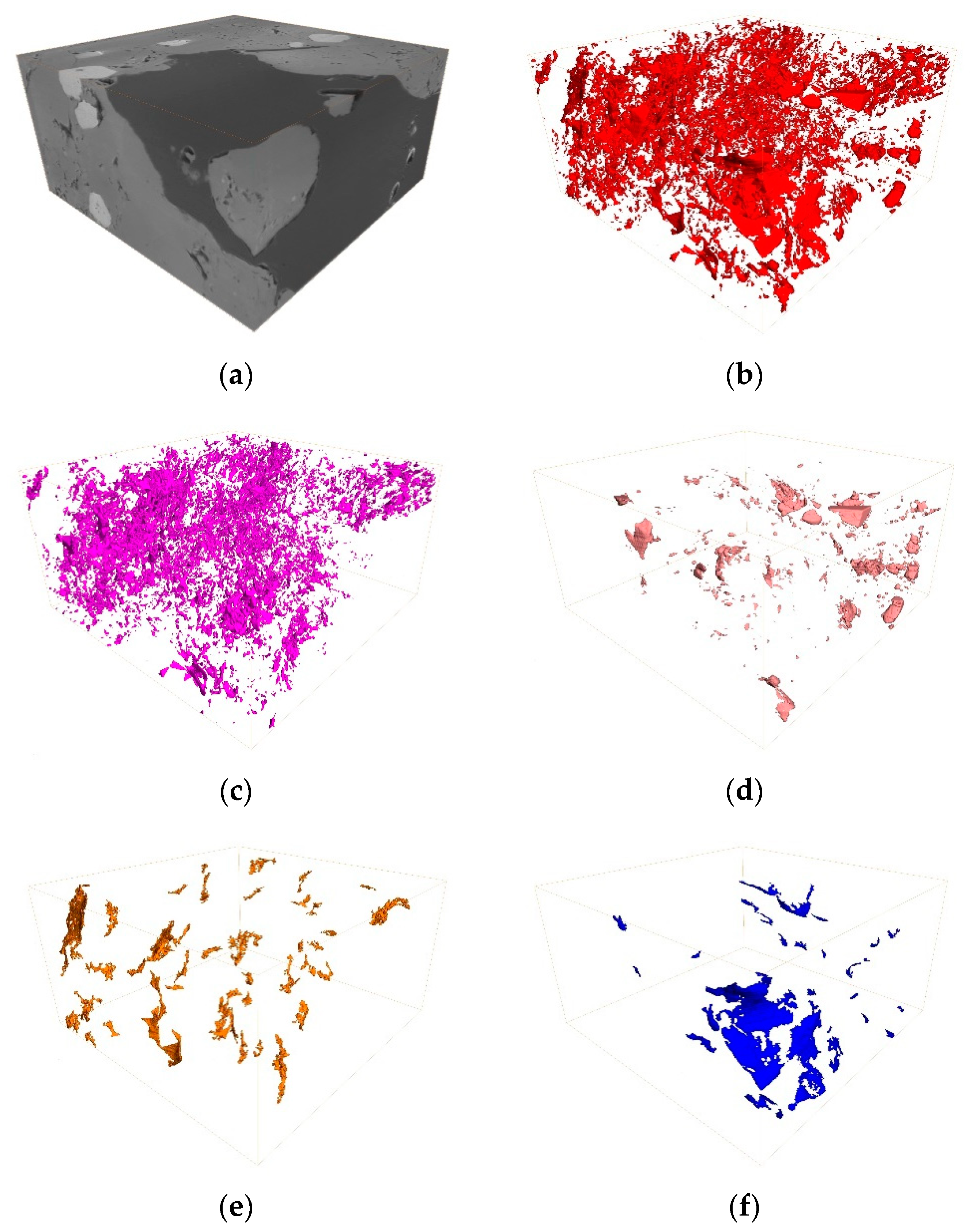

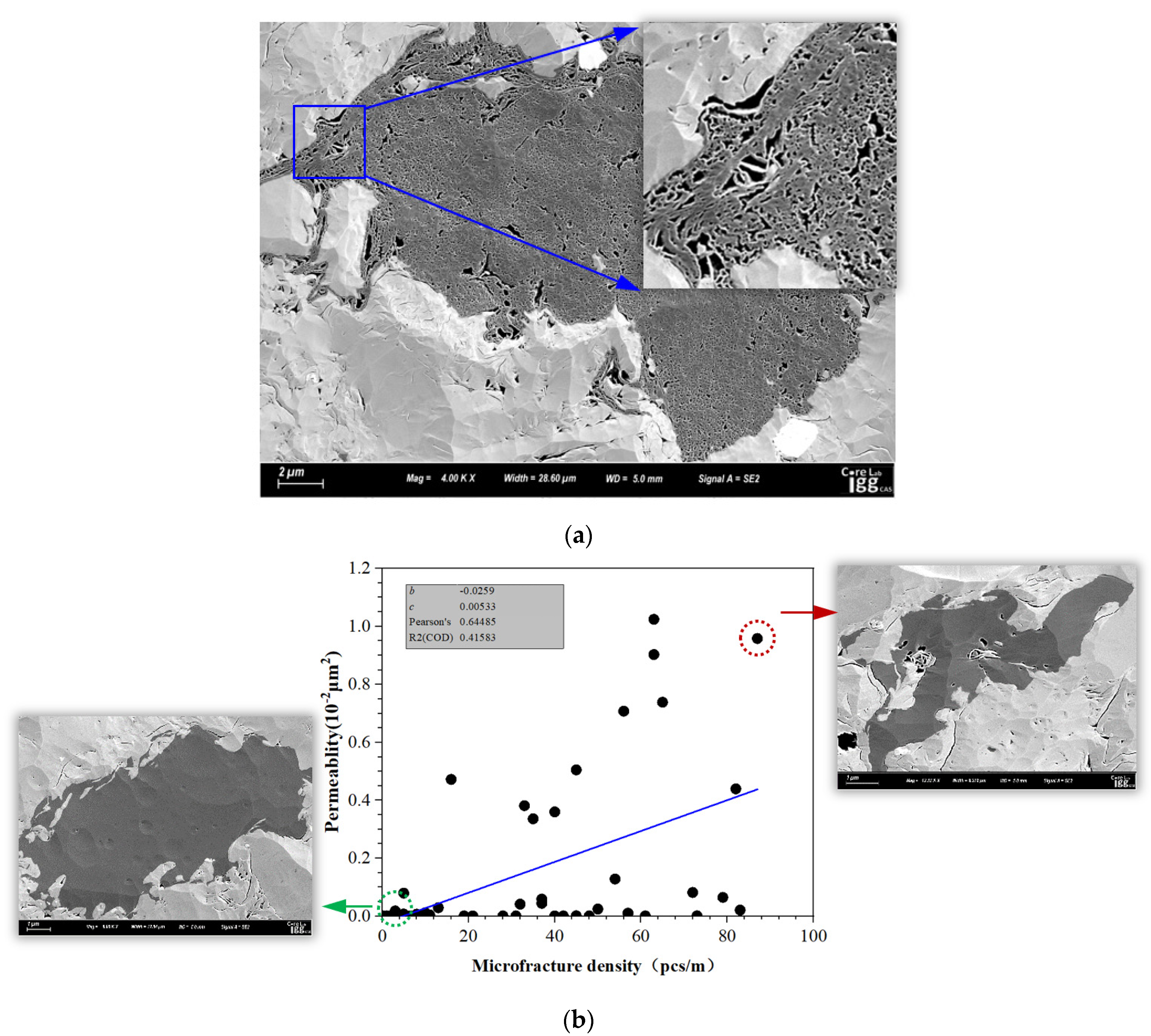
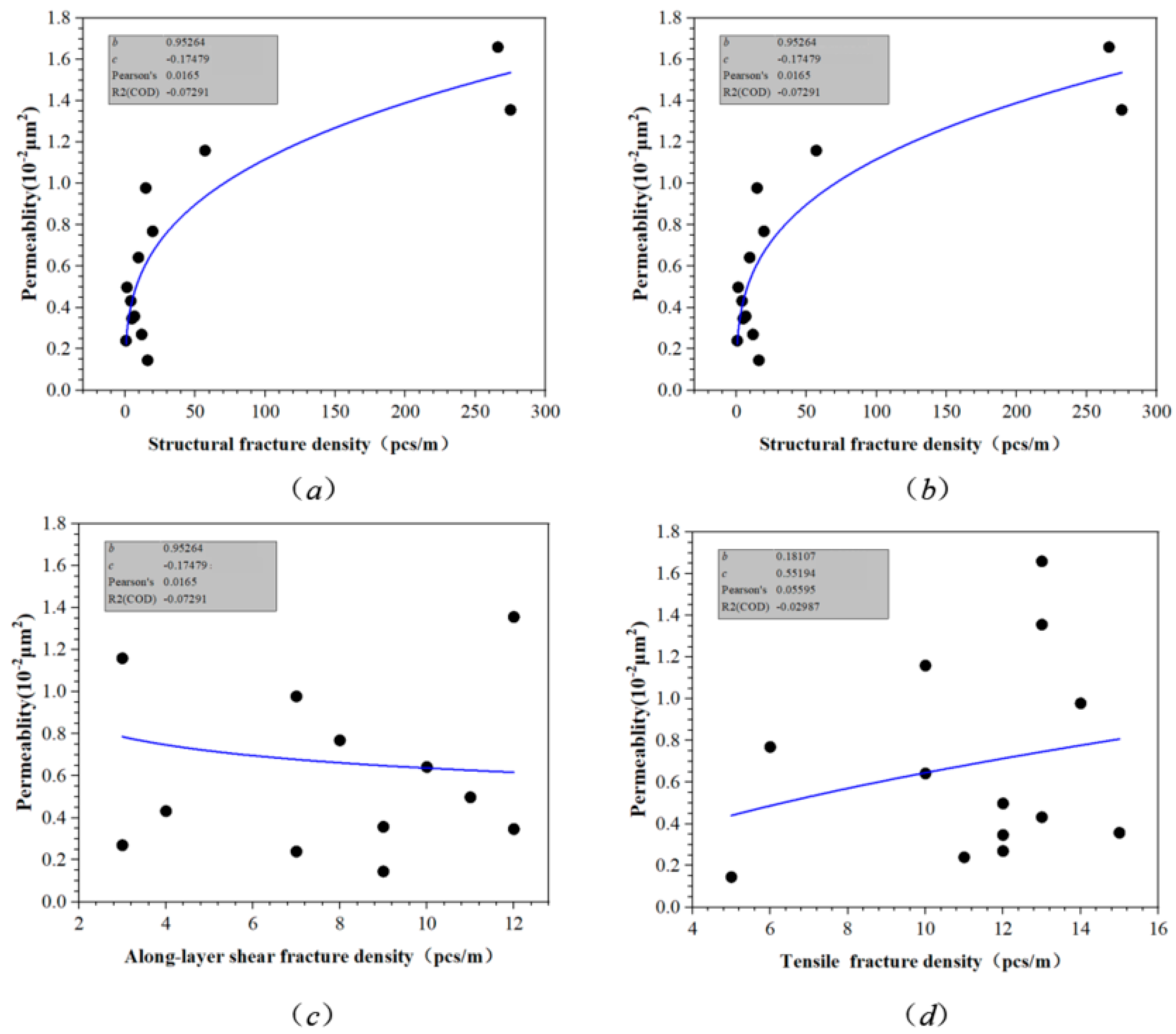
| Well | Depth (m) | Inclusion Number | Size (μm) | Phase State | Homogenization Temperature (°C) | Salinities (wt%) |
|---|---|---|---|---|---|---|
| X203 | 4818.61 | 1 | 8 | Liquid phase | 80 | 0.18 |
| 2 | 6 | Liquid phase | 72 | 0.35 | ||
| 3 | 7 | Liquid phase | 68 | 0.18 | ||
| 4 | 6 | Liquid phase | 86 | 0.53 | ||
| 5 | 5 | Liquid phase | 65 | 0.18 | ||
| 6 | 3 | Liquid phase | 90 | 0.7 | ||
| 7 | 3 | Liquid phase | 68 | 0.18 | ||
| 8 | 4 | Liquid phase | 70 | 0.35 |
Disclaimer/Publisher’s Note: The statements, opinions and data contained in all publications are solely those of the individual author(s) and contributor(s) and not of MDPI and/or the editor(s). MDPI and/or the editor(s) disclaim responsibility for any injury to people or property resulting from any ideas, methods, instructions or products referred to in the content. |
© 2023 by the authors. Licensee MDPI, Basel, Switzerland. This article is an open access article distributed under the terms and conditions of the Creative Commons Attribution (CC BY) license (https://creativecommons.org/licenses/by/4.0/).
Share and Cite
Wang, W.; Xie, X.; Liu, C.; Cao, F.; Zheng, G.; Wang, Z.; Chen, G.; Deng, H.; He, J.; Li, K. Characteristics and Formation Stages of Natural Fractures in the Fengcheng Formation of the Mahu Sag, China: Insights from Stable Carbon and Oxygen Isotope and Fluid Inclusion Analysis. Minerals 2023, 13, 894. https://doi.org/10.3390/min13070894
Wang W, Xie X, Liu C, Cao F, Zheng G, Wang Z, Chen G, Deng H, He J, Li K. Characteristics and Formation Stages of Natural Fractures in the Fengcheng Formation of the Mahu Sag, China: Insights from Stable Carbon and Oxygen Isotope and Fluid Inclusion Analysis. Minerals. 2023; 13(7):894. https://doi.org/10.3390/min13070894
Chicago/Turabian StyleWang, Wei, Xinhui Xie, Caiguang Liu, Feng Cao, Guoqing Zheng, Zhenlin Wang, Gang Chen, Hucheng Deng, Jianhua He, and Kesai Li. 2023. "Characteristics and Formation Stages of Natural Fractures in the Fengcheng Formation of the Mahu Sag, China: Insights from Stable Carbon and Oxygen Isotope and Fluid Inclusion Analysis" Minerals 13, no. 7: 894. https://doi.org/10.3390/min13070894




